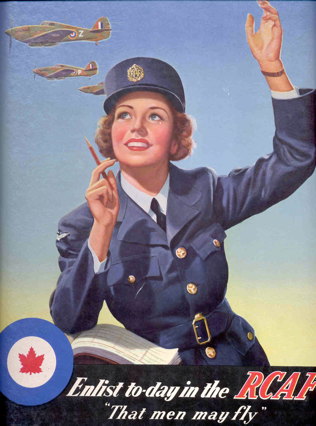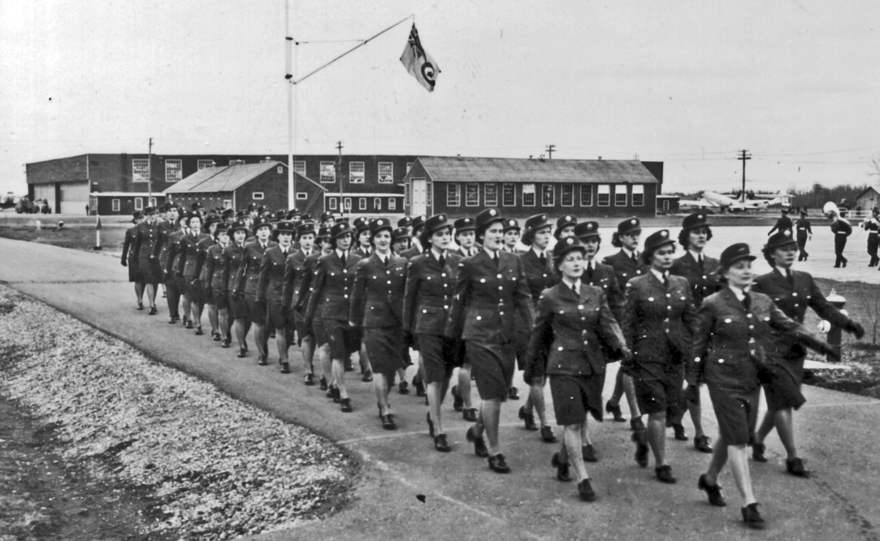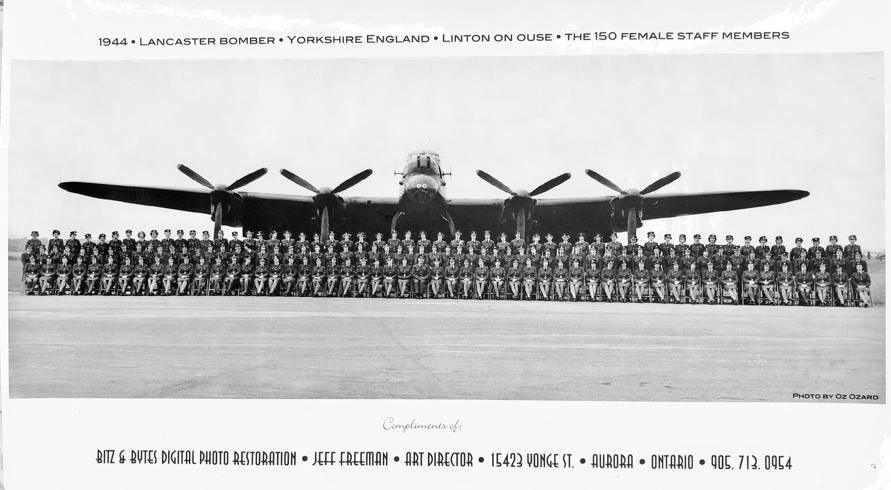 Bomber Command
Bomber Command  |
Aircrew Chronicles
|
Aircrew Losses
|
Nose Art
|
|
Aircrew Chronicles
|
Aircrew Losses
|
Nose Art
|
 BCATP
BCATP  |
Lancaster
|
Media
|
Lancaster
|
Media
 Bomber Command
Bomber Command  |
Aircrew Chronicles
|
Aircrew Losses
|
Nose Art
|
|
Aircrew Chronicles
|
Aircrew Losses
|
Nose Art
|
 BCATP
BCATP  |
Lancaster
|
Media
|
Lancaster
|
Media

|

|

|
|
In 1918, the British Royal Airforce formed a Women's Auxiliary Division. Although 32,000 women served in the WRAF, this group disbanded after the First World War. At the onset of the Second World War another Women's Auxiliary Division was formed. Miss Jane Trefusis-Forbes was appointed its' first director. Her rank was 'Senior Controller' and her badges indicated 'Air Commodore.' Initially, women were recruited to fill postings as clerks, kitchen orderlies, equipment assistants, balloon fabric workers and drivers. The occupations open to women recruits, eventually diversified as the war progressed. By 1945, fifteen officer categories were attained by women and 59 aircrew trades were occupied by WAAF personnel. WAAF servicewomen were also a part of the Allied Forces communication system which facilitated both the offensive and defensive efforts of the combined Air Forces. Air to ground communications were vital to the success of bomber and fighter command missions, as well as the safe return of aircrews and aircraft. |
 |

 |
The shortage of manpower during the Second World War prompted the RAF to suggest that the Canadian government form a Women's Division similar to that of the WAAF. In June of 1941, the Canadian Military announced it would enlist women to fill non-combatant posts in the Armed Forces. HRH Princess Alice was invited to serve as the Commandant of the Canadian Women's Division and the recruiting efforts began. The first 150 candidates were trained in October of 1941. After completing their six week course, fifty-eight were commissioned, ten were appointed administrative sergeants and the remainder were corporals. French speaking women were required to make an extra effort when signing on with the Women's Division. They were asked to attend an eight week course to learn English before they commenced regular training. The first postings offered to the personnel of the Women's Division were clerks, cooks, equipment assistants, fabric workers, hospital assistants, drivers, photographers, meteorologists and telephone operators. On January 2, 1942 the first of hundreds of W.D. personnel were posted at the British Commonwealth Air Training schools. Once the staffing of these schools was filled, women were sent to Bombing and Gunnery schools. By 1944, sixty trades were available to women. |
|
W.D. recruits earned two thirds of the salaries paid to their male counterparts. In 1943, this was increased to four fifths. The first W.D. personnel sent overseas were posted at No. 6 Bomber Group in Yorkshire. There were so many Canadians posted there it became known as 'Little Canada'. As part of air to ground communications W.D. servicewomen worked in the Operations Room, plotting locations of RCAF planes and enemy German aircraft. The Women's Division continued to recruit until 1944 when there were 6000 officers amongst the ranks. The total number of W.D. personnel reached 17,000 before the end of the Second World War. Over the duration of the war, thirty W.D. servicewomen lost their lives in airplane incidents. |
 |
 |
 |



